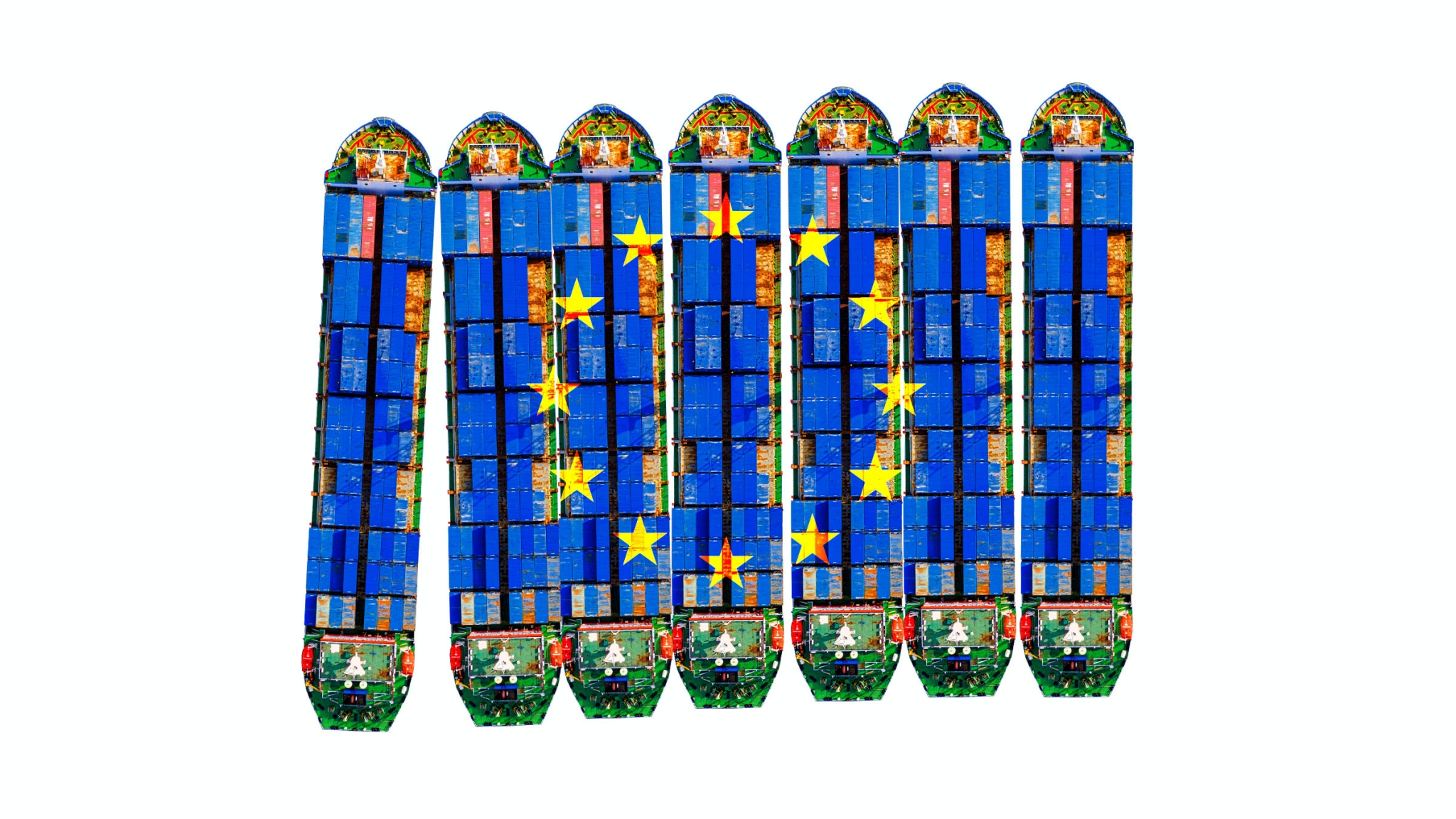In the face of the current sustainability crises, systems change is the only way ahead. The circular economy, which addresses the climate , biodiversity and unsustainable resource use, must become the new paradigm. The circular economy – a system based on prolonging and retaining the economic value of materials, including through designing out waste and toxicity and employing new business models and services – is gaining traction.
Many countries and economic blocs are taking the first steps towards transforming their economies towards circularity. The EU, having adopted a comprehensive Circular Economy Action Plan in March 2020, is taking the lead. In today’s globally connected economy – organised around highly integrated value chains connecting goods, technologies, services and data – the circular economy can only work when integrated into all its facets.
While agreeing on trade and circular economy principles at the World Trade Organization (WTO), is the best option and eventual goal, the EU can also move ahead through regional and bilateral free trade agreements (FTAs). As shown in a new study by the International Institute for Sustainable Development (IISD) and Sitra, FTAs allow for close co-operation and economic integration between countries, including on behind-the-border issues such as regulations and standards. The regulations and incentives driving the circular economy – such as product policy and design, mandates and economic incentive systems – are currently evolving rapidly.
The EU would be wise to co-operate with its trade partners on technical developments from the outset rather than sorting out problems later on. This would set the scene for large and consistent markets for circular products and services that would help set the world on track towards sustainability.
In its FTAs, the EU could choose either to integrate the circular economy into different chapters, or even to negotiate stand-alone chapters or annexes on the circular economy.
Trade is the engine behind a global circular economy transition
Based on international comparative advantages and scale effects, trade can help enable a global circular economy transition. Cross-border exchange of relevant goods and services already occurs at all stages of the value chain, including upstream services related to circular design, goods for refurbishment and remanufacturing, or trade in waste and secondary materials. Increasingly, companies providing circular digital solutions, such as predictive maintenance, sharing platforms or product-service systems, are expanding globally, as highlighted in the report by Sitra and the IISD on services trade in a circular economy transition.
International trade co-operation and coherent policy approaches across jurisdictions are important. The EU and its trade partners can use a range of trade-related policy measures, including tariff and non-tariff measures, to encourage a move away from the take-make-waste economic model. When it comes to trade co-operation with developing countries, the EU can focus on technical assistance and Aid-for-Trade that supports partner countries’ circular economy transition and identifies trade-related opportunities.
Free trade agreements are both political and technical instruments
By including the circular economy in its FTAs – as well as in practical Circular Economy Missions, including businesses that provide circular solutions – the EU and its FTA partners can signal their mutual commitment to transitioning to a circular economy. Through co-operation in various technical committees, such as TBT (technical barriers to trade), they can start working out the practical details of the transition together.
In recent years, the EU has started including the circular economy in its newest FTAs, namely within trade and sustainable development (TSD) chapters. In one case so far – the revised EU-Mexico trade agreement – circular economy principles are included in an annex on energy and natural resources. Technical annexes in FTAs have been used before to promote other politically important goals, such as renewable energy. Looking ahead, there are different ways in which the EU and its partners can include the circular economy in their FTAs, as highlighted below.
Where to include a focus on the circular economy in FTAs
Preambular language and TSD chapters
Preambular language in FTAs already recognises the mutually supportive relationship between trade and sustainable development, which could be interpreted as covering the circular economy. The right to regulate in the public interest and commitments not to lower standards in order to attract trade and investment are included in TSD and environment chapters. These could both implicitly and explicitly apply to the circular economy. The gist of the TSD chapters relates to co-operation – of great relevance to the circular economy, and explicitly included in some new FTAs between the EU and Mexico, Australia, New Zealand, Mercosur, Chile and the United Kingdom. The sustainable development chapters also emphasise co-operation on the implementation of a set of multilateral environmental agreements and topics relevant to the circular economy. The Basel Convention, which imposes improved controls on the transboundary movements of hazardous waste, provides one example, as does the Paris Agreement. Other areas relevant to the circular economy are sustainable production and consumption, trade and investment in environmental goods and services, energy and resource efficiency, waste management, ecolabelling, and the exchange of information and best practices. At the end of the day, commitments to co-operate will be as effective or ineffective as their actual implementation and inclusive and supportive structures are needed in this regard.
Tariff liberalisation
Tariff liberalisation forms the core of FTAs and can facilitate the diffusion of circular solutions and technologies that promote the more efficient use of finite resources. Tariff elimination can be front-loaded, and export restrictions removed, for goods related to the circular economy. Some key issues will have to be resolved – such as how to agree on what circular goods to include for tariff removal, and classification issues related to secondary goods and materials that could go on to a second life after export. Overall, the Harmonised System (HS) used to identify goods in trade agreements has its limitations and would need to be updated to account for the development of the circular economy, while distinguishing between hazardous and non-hazardous goods and materials.
Circular services
A focus on goods trade alone is not enough to advance the circular economy and may not be where the best opportunities for new and transformational growth and change lie. Services liberalisation – both in terms of rules and market access – is an area where FTAs can go deeper and further than is possible at the WTO. Traditional environmental services areas, such as water and waste treatment, remain relevant to circular economy activities. Supportive services, such as design, engineering, research and development, and digital services, are just as important and horizontal services liberalisation in and of itself is important to advance the circular economy. Liberalising circular goods and services together will be important, as is often the free flow of data for digitally driven circular economy solutions.
Technical barriers to trade and regulatory co-operation
Technical barriers to trade (TBTs) include standards, regulations and conformity assessment procedures. In practice, the circular economy will be driven by new, circular product policy and regulation. Differences in the design and implementation of standards and regulations across jurisdictions would send diverging signals to producers and reduce incentives to adopt consistent circular solutions along the value chain. Regulatory heterogeneity could also impose additional costs for exporters and act as non-tariff barriers to trade.
Taking a step further, deep integration FTAs focus on good regulatory practice and co-operation. In practice, more advanced forms of co-operation are often easier on new regulatory issues like the circular economy, as agencies are less entrenched in their existing practice. Such co-operation does require a high level of economic integration and trust among regulators. This could be a practicable way forward between the EU and Canada under the Comprehensive Economic and Trade Agreement (CETA).
Investment provisions
A shift toward more circularity and resource efficiency will require enormous investment in new business models, technologies and practices supported by effective regulations. Investment provisions in FTAs could focus on both preserving regulatory flexibilities on circular economy matters and promoting investments in the circular economy – as well as ensuring that investments comply with circular economy standards and regulation.
Cutting harmful subsidies
A successful circular economy transition will depend on supportive economic incentive structures. FTAs can support this goal by including provisions on subsidy disciplines aimed at increasing transparency, reducing harmful forms of support, or providing a safe harbour for beneficial subsidies and ensuring a level playing field between parties.
Government procurement
Government procurement makes up a large proportion of countries’ economies and is increasingly used to promote circularity goals. Through FTAs, countries often open up their public procurement sector. As a minimum, FTAs can confirm the right to discriminate on the basis of environmental criteria, which could include circular economy standards. Going further, countries could commit to procurement processes and best practices in support of a circular economy.
Are specialised circular economy chapters a way forward?
In FTAs, specific chapters or annexes could be developed in order to promote the circular economy. Given the wide-ranging effects of the circular economy transition, enabling provisions could also be horizontally integrated across the whole breadth of an FTA, including in TSD chapters, trade in goods, services, subsidies, investment and public procurement chapters.
Ultimately, the legal nature of circular economy-related provisions and their potential implications will mainly depend on how they are drafted and not so much on where they are located in an FTA. A dedicated chapter on the circular economy would nonetheless send a strong political signal from the parties that they are committed to co-operating on this matter. The risk, on the other hand, is to present the circular economy as an add-on or afterthought as opposed to an integral part of the different components of an FTA. As the EU moves ahead with promoting coherence between trade and circular economy in its foreign policy, these questions will need to be considered.


















Recommended
Have some more.